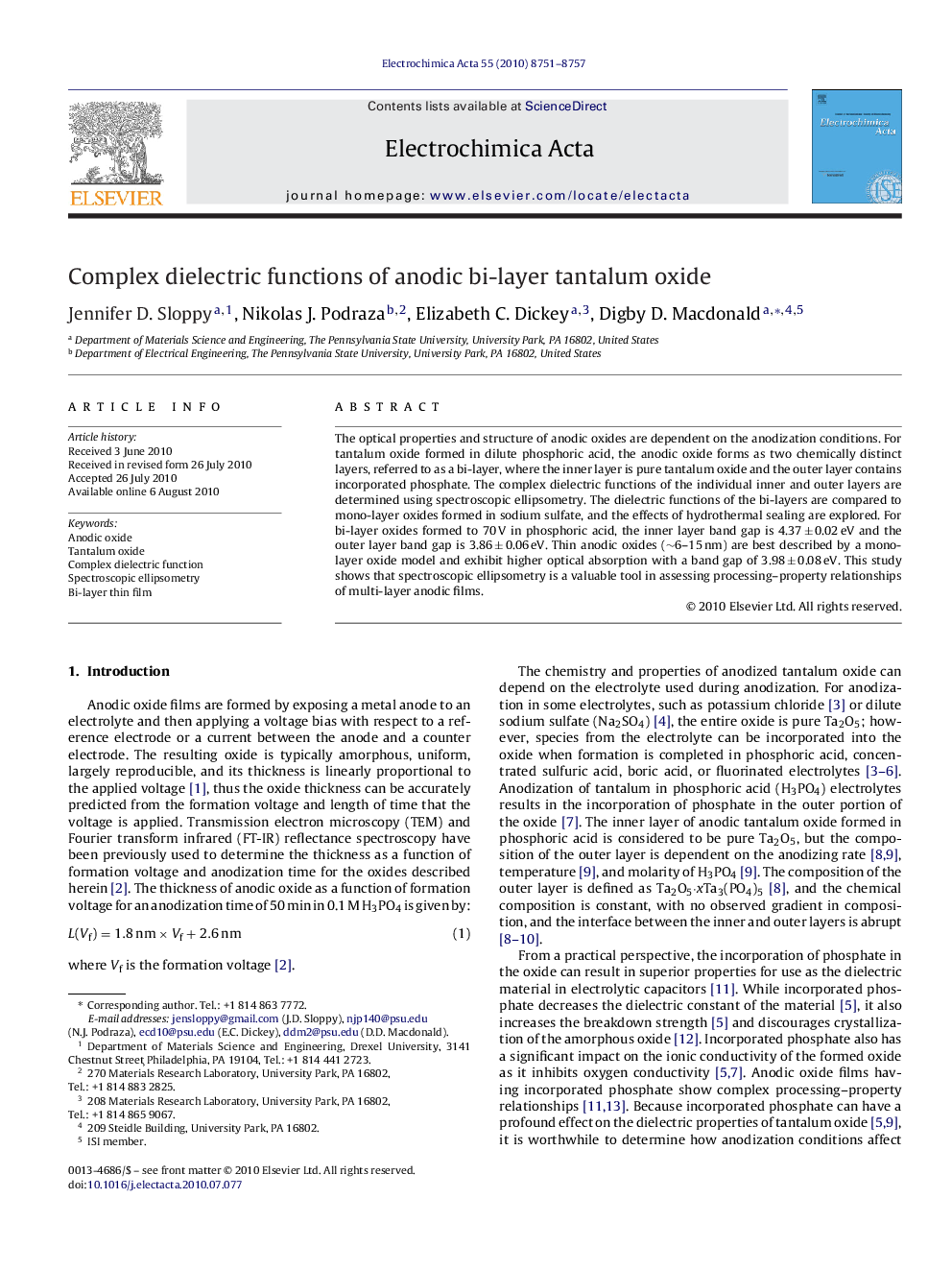| Article ID | Journal | Published Year | Pages | File Type |
|---|---|---|---|---|
| 190035 | Electrochimica Acta | 2010 | 7 Pages |
The optical properties and structure of anodic oxides are dependent on the anodization conditions. For tantalum oxide formed in dilute phosphoric acid, the anodic oxide forms as two chemically distinct layers, referred to as a bi-layer, where the inner layer is pure tantalum oxide and the outer layer contains incorporated phosphate. The complex dielectric functions of the individual inner and outer layers are determined using spectroscopic ellipsometry. The dielectric functions of the bi-layers are compared to mono-layer oxides formed in sodium sulfate, and the effects of hydrothermal sealing are explored. For bi-layer oxides formed to 70 V in phosphoric acid, the inner layer band gap is 4.37 ± 0.02 eV and the outer layer band gap is 3.86 ± 0.06 eV. Thin anodic oxides (∼6–15 nm) are best described by a mono-layer oxide model and exhibit higher optical absorption with a band gap of 3.98 ± 0.08 eV. This study shows that spectroscopic ellipsometry is a valuable tool in assessing processing–property relationships of multi-layer anodic films.
